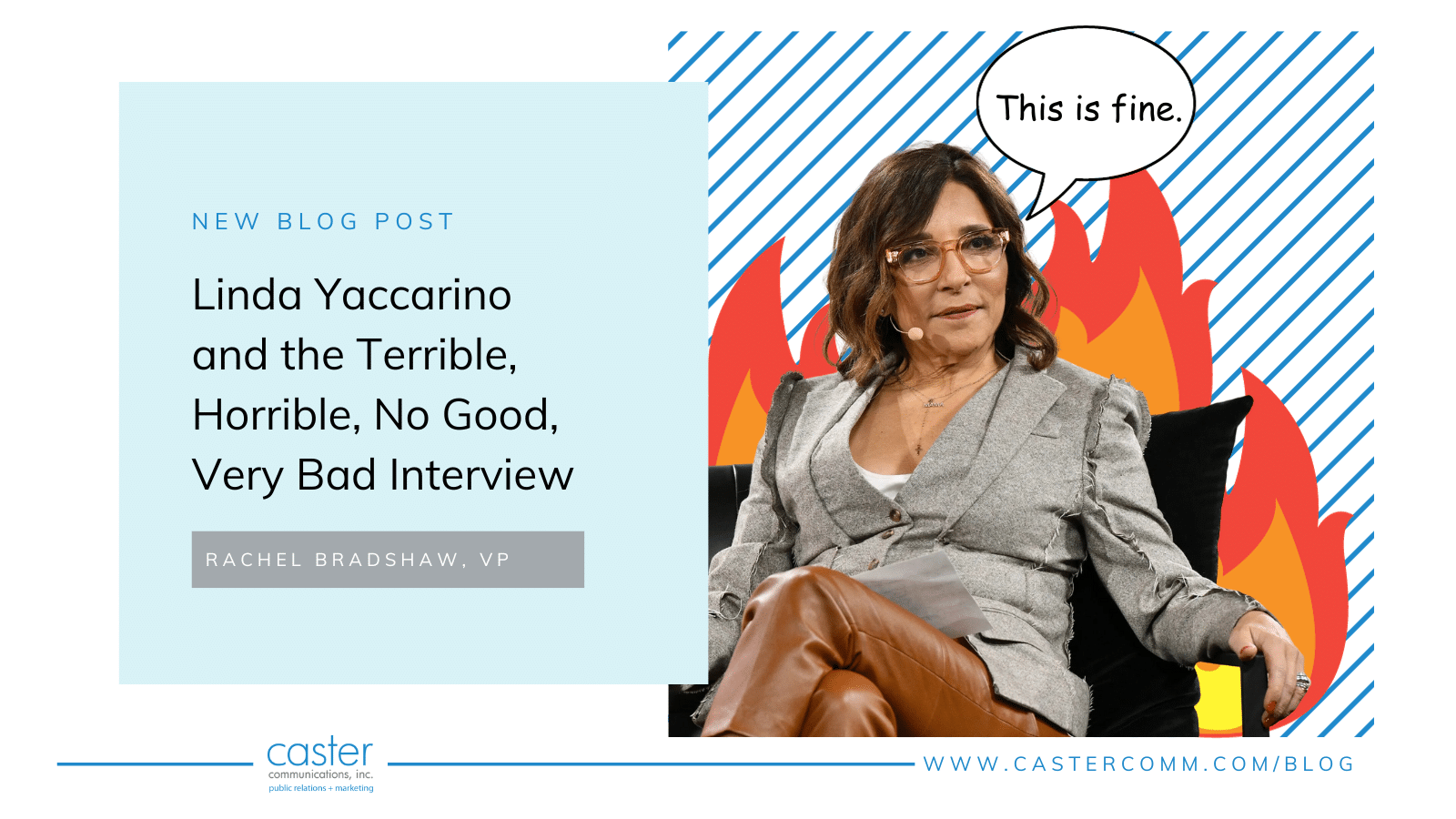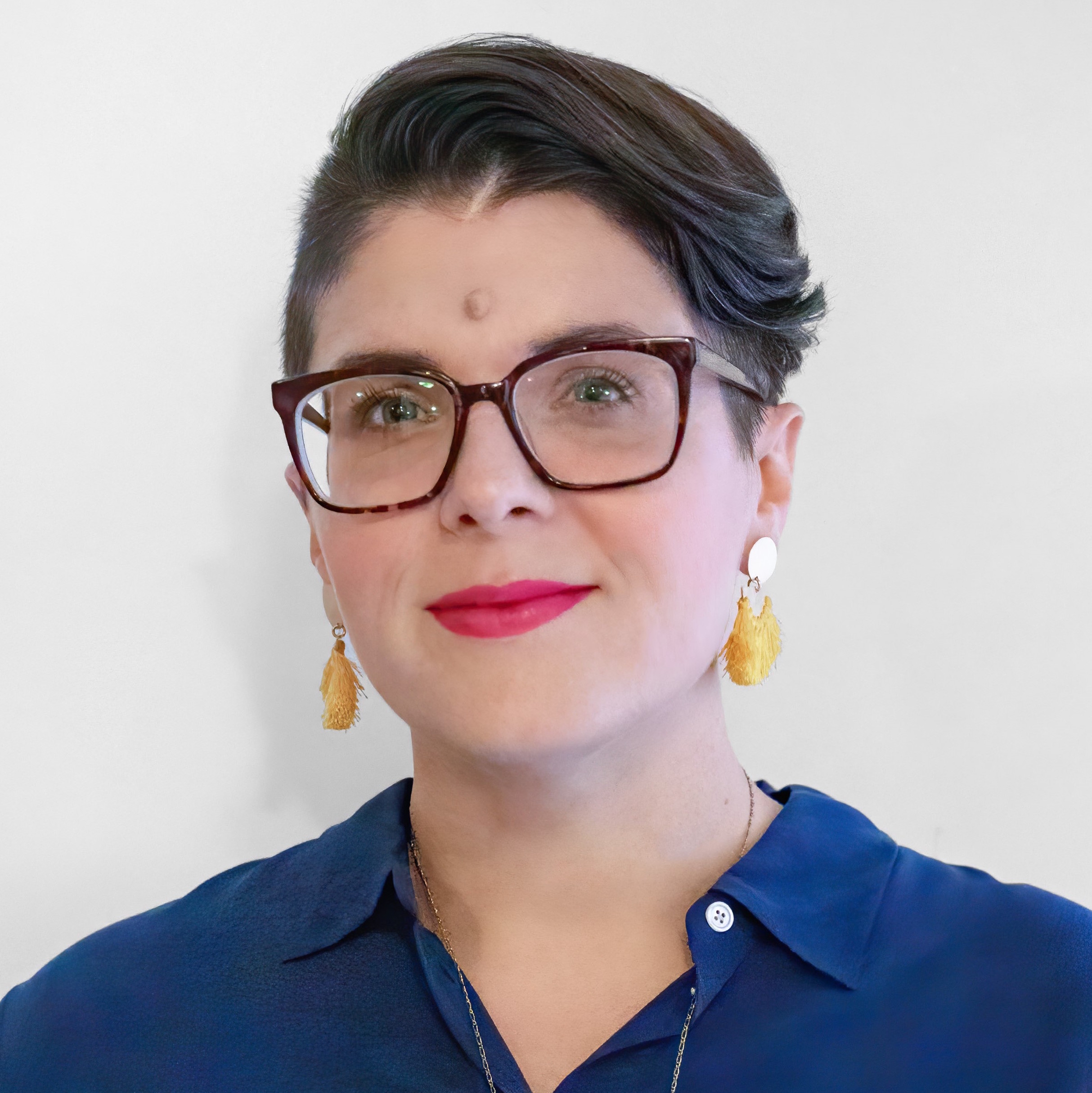
Linda Yaccarino and the Terrible, Horrible, No Good, Very Bad Interview
What execs can learn from the X CEO’s nightmare Code Conference appearance
It’s been a tough couple of weeks for Linda Yaccarino. On September 27, she participated in her most prominent outing yet as CEO of X, sitting with CNBC’s Julia Boorstin at Code Conference. It did not go well.
The media called the interview “wild,” “widely panned,” “disastrous,” and a “trainwreck.” The mountain of negative press after Code Conference has been broadly cited as the reason Yaccarino dropped out of WSJ Tech Live last week.
I’m not here to pile on Linda Yaccarino: What happened at Code Conference is a prime example of how even the most polished executives need media training for high-profile events. Instead of crowing about how Yaccarino messed up, let’s look at what went wrong, and what we can learn from it.
Do Your Research
Many have cited a last-minute addition to the conference schedule – Yoel Roth, former head of trust and safety at Twitter – as the reason why Yaccarino was off her game. Since resigning in November 2022, Roth has become an outspoken critic of X and its owner, Elon Musk. In Roth’s interview with Kara Swisher at Code Conference, he addressed Yaccarino directly: “You should be worried. I wish I had been more worried.”
Roth was added to the schedule immediately before Yaccarino, transforming the context of her remarks. Now, she wasn’t participating in a fireside chat, but defending herself and her company against a prominent critic. Some felt Code Conference did Yaccarino dirty, but she and her comms team should not have been surprised.
via GIPHY – Yaccarino reviewing the updated Code Conference schedule.
Kara Swisher, who interviewed Roth, is the co-founder of Code Conference. She’s also one of tech media’s most prominent voices on Elon Musk’s heel turn. She has written at length about how she came to first admire and then sour on the owner of X, and their falling out was a plot point in Walter Isaacson’s recent Musk biography. Both she and conference co-host Casey Newton had previously conducted sympathetic podcast interviews with Roth. The Verge, whose editor-in-chief Nilay Patel co-hosted the conference alongside Boorstin and Newton, has also given Roth’s thoughts on X a lot of air since his resignation.
When prepping for a media interview, it’s critical to research the outlet and interviewer’s editorial positions. For a conference like Code, which is organized and hosted by several media outlets working in collaboration, that means looking across publications for editorial themes. Considering past coverage by Swisher, Newton, the Verge, and conference hosts Vox, it would have been shocking if Roth’s criticisms hadn’t come up.
Get Help Prepping the Hard Questions
Yaccarino came prepared with stats on X’s ad revenues and profitability. She even prepared a soundbite for Roth, though your mileage may vary on its effectiveness: “He worked at Twitter. I work at X.” Still, many of Boorstin’s questions seem to take her totally off guard.
When asked whether Musk is planning to roll out a subscription fee for all X users, Yaccarino had no answer – in fact, she seemed to be hearing the idea for the very first time on stage. Her responses to questions about user engagement, election integrity, and hate speech on the platform were conspicuously vague. When asked whether she or Musk was truly in charge, she swatted the question away as “not nice.” Maybe not, but it sure was predictable.
These were not “gotcha” questions about X’s deepest, darkest secrets; all of Boorstin’s questions were ripped from the headlines. Yaccarino and the team should have been scouring social and traditional media for these stories and preparing thorough responses to each likely topic.
My guess, however, is that Yaccarino did prep most of them – but not for the right audience. Her responses often seemed to presuppose admiration for Musk. At one point, she asked rhetorically “Who wouldn’t want Elon Musk sitting by their side running product?” Amid a cloud of raised hands, the audience literally laughed at her.
via GIPHY – Code Conference attendees, when asked “Who doesn’t want to work with Elon Musk?”
Internal stakeholders often have difficulty assessing how outsiders are likely to react. Like it or not, every company is an echo chamber: the message reinforcement that keeps everyone aligned and on-mission can also suppress criticism and self-reflection. This effect is exponentially stronger at a company with a dominant personality at its center. A communications strategy partner with a little distance from the company can help you ask yourself tough questions and refine your responses.
You Don’t Have to Talk
Yaccarino didn’t have to speak right after Roth at Code Conference. Organizers claim she was given the option to speak first and elected to have the last word instead – but more importantly, she didn’t have to agree to appear at Code Conference at all. The media outlets involved in Code have been pointedly critical of X, and their tough questions were extremely predictable. It’s too late now, but WSJ Tech Live would probably have been a friendlier venue for her first big public appearance as CEO.
Even after she accepted, she had a choice. Roth’s interview was confirmed a week before the event. Backing out so late might have risked Yaccarino’s relationship with the conference organizers, but that must be weighed against the cost of going forward. Her presence elevated Roth’s. Without her there, his surprise appearance would have been a non-story. Appearing back-to-back was a 100% self-generated PR crisis.
But let’s take all the hypotheticals off the table: once Yaccarino sat down for the interview, she forgot that one of the primary rules of media training is “know when to stop talking.” The interview ran over as Yaccarino took Boorstin’s offer to “stay as long as you want.” That allowed Boorstin to press her further on trust and safety staffing, a difficult line of questioning during which Yaccarino suddenly discovered that whoops! She did have to leave right now. Her abrupt exit was the awkward cherry on a 40-minute cringe sundae.
via GIPHY – Linda Yaccarino responds to questions about staffing the election security team at X.
You have to know when to cut bait and regroup:
- If an opportunity is a bad fit, pass.
- If an event or opportunity evolves to benefit your competitors and critics as much or more than you, push back or reconsider.
- If everything you say seems to be coming out wrong, say less. Take your time answering questions, resist the temptation to fill silence, and beware of interviews with no predetermined end time.
At the outset, I said I didn’t want to pile on Linda Yaccarino. I’m…not sure I accomplished that mission. So, let me conclude by saying, Linda Yaccarino is a brilliant woman with an impeccable resume. Her hiring was heralded as a coup for X and a massive blow to NBC Universal, where she had worked for over a decade. She’s a pioneer of large-scale digital advertising and is rightfully credited for bringing hundreds of advertisers back to X after a chaotic year. If an epically terrible interview can happen to her, it can happen to anyone.
Media training is not one-and-done. Executives don’t become media-ready and stay that way forever. Each interview requires thought, and each message requires practice. If you’re looking for a coach, reach out. We’d love to help you ask and answer the hard questions.

